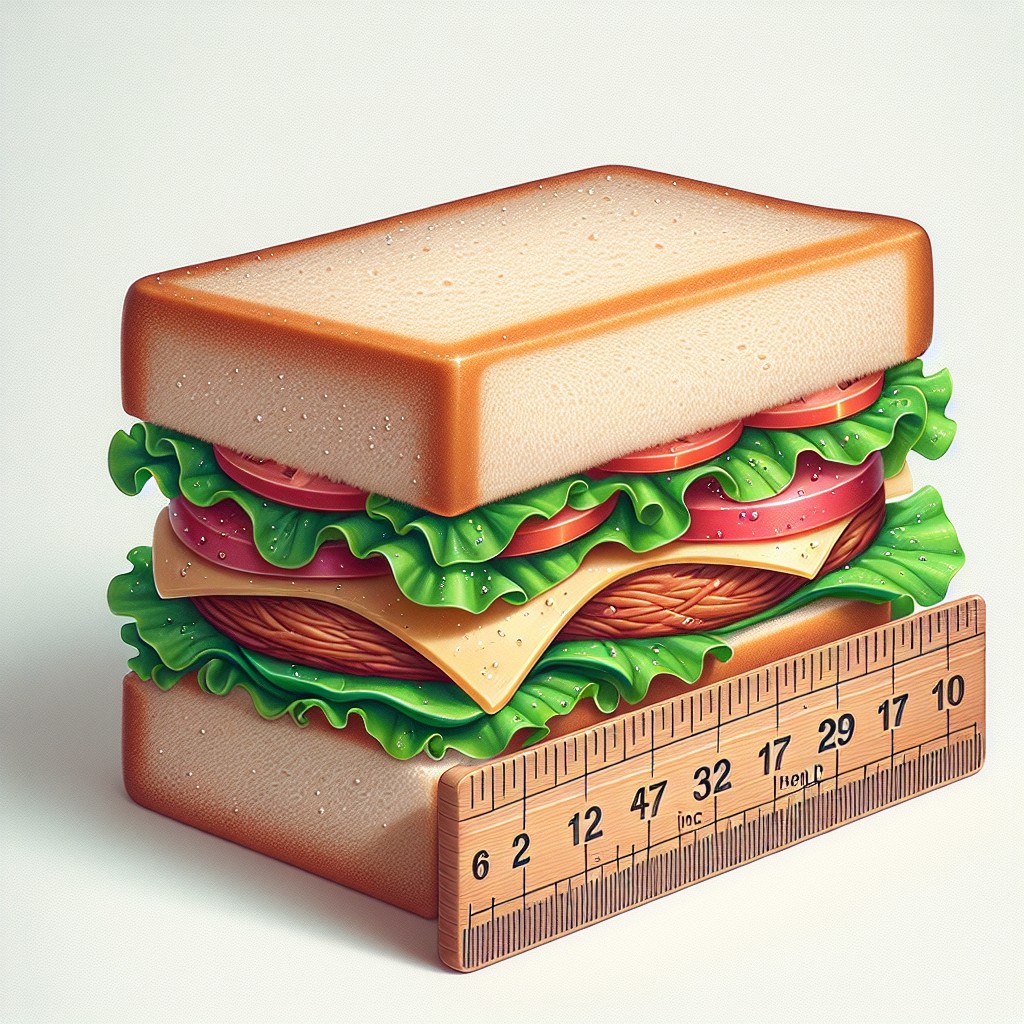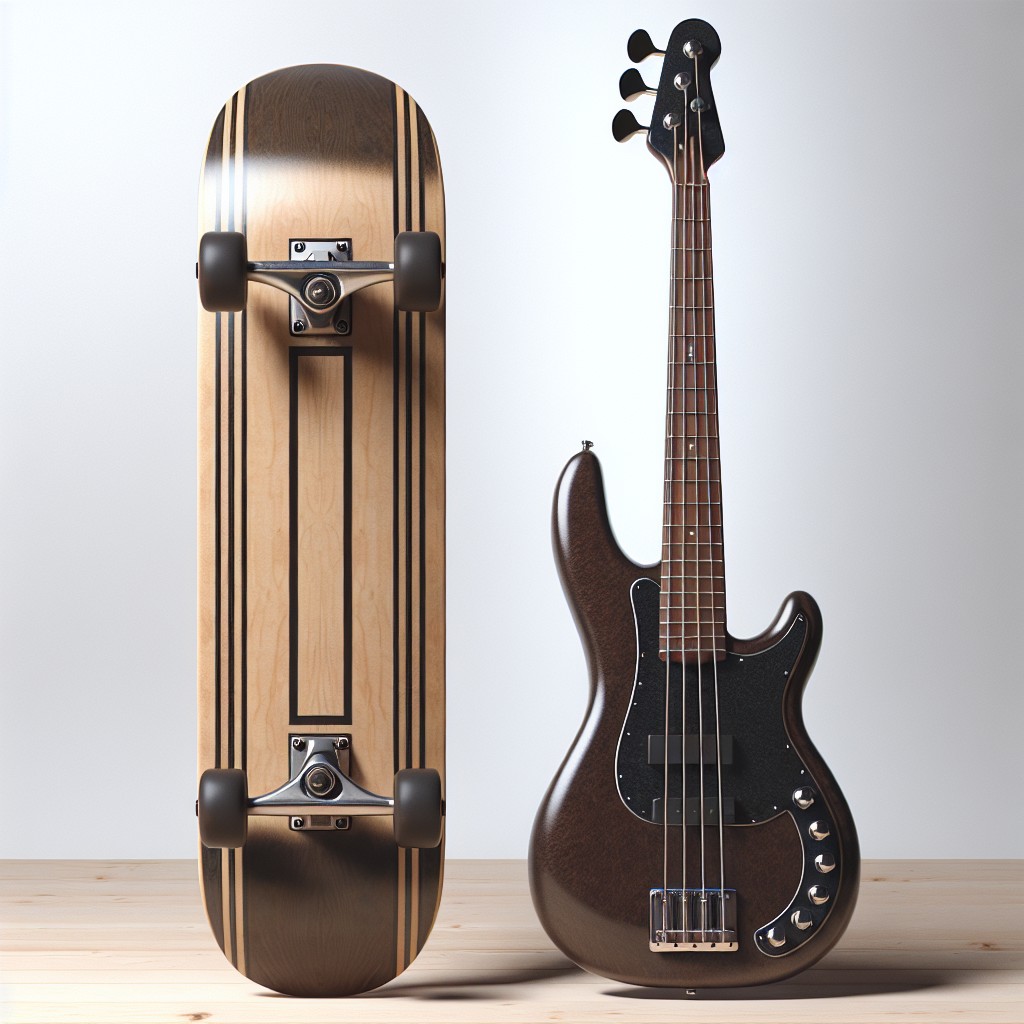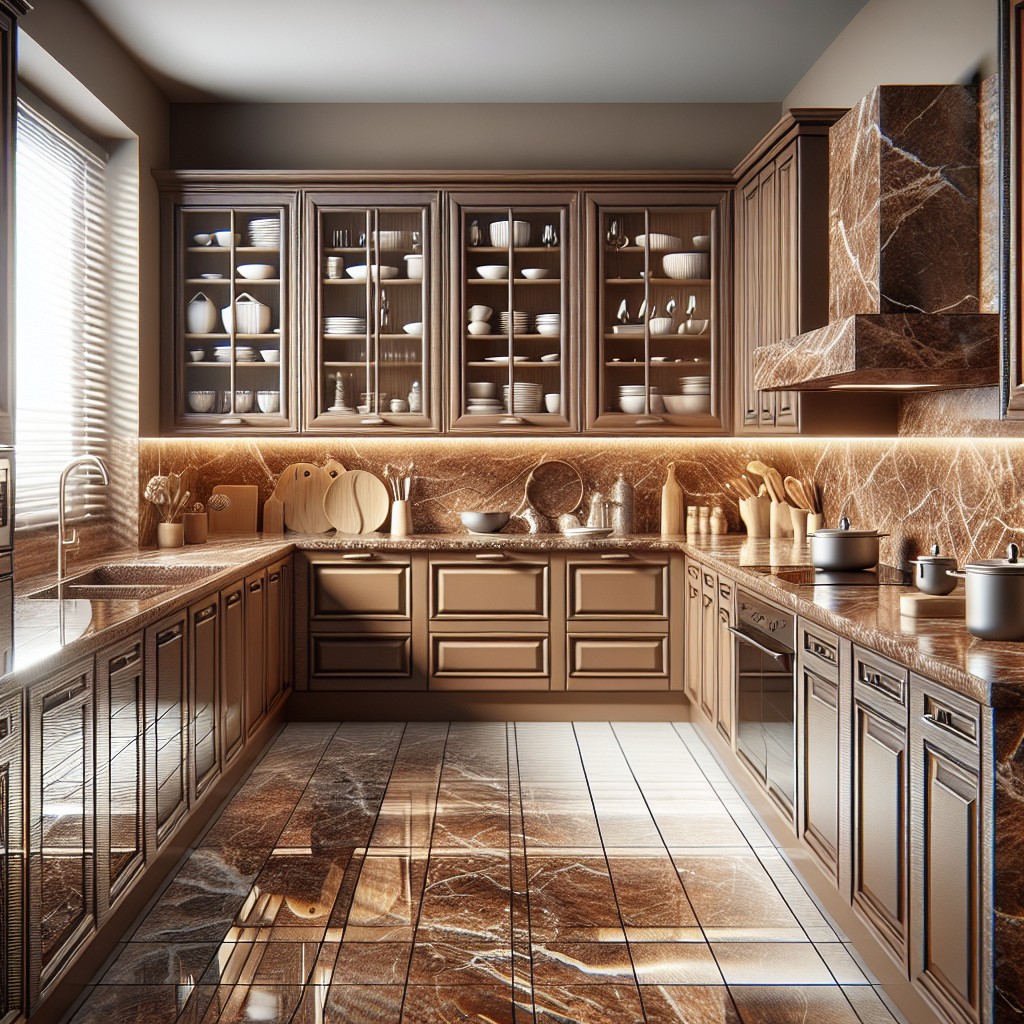Last updated on
Dive into a fascinating exploration of the dimensions, comparisons, and real-world applications of an 18-inch measurement.
Key takeaways:
- 18 inches is roughly the width of a standard ruler plus half its length.
- It is equivalent to the diameter of a large pizza or the length of two letter-size papers.
- Understanding 18 inches can help with hanging pictures, spacing plants, and packing for travel.
- It is comparable to the width of aisles in grocery stores and the shoulder width of adults.
- In home decor, 18 inches is a common size for throw pillows, wall art, end tables, and shelves.
What's Inside
Common Objects Compared to 18 Inches

Visualizing 18 inches in relation to common objects simplifies understanding its dimensions. Picture the width of a standard ruler plus half its length again—that’s roughly 18 inches.
A large pizza from many restaurants typically measures this in diameter, offering a delicious size reference.
Think of two standard American letter-size papers laid end-to-end—this spans almost exactly 18 inches.
Lastly, for those who frequent hardware stores, six standard bricks lined up edge to edge will also give you a straight line measuring close to this length.
These comparisons offer an everyday context, making 18 inches easier to picture and relate to.
Practical Applications in Daily Life

Understanding the span of 18 inches can help you navigate various situations. For instance, while hanging pictures, knowing that a standard frame might span this length ensures proper spacing and balance on your walls. Similarly, a grasp of this measurement can aid gardeners in spacing plants, ensuring each has enough room to thrive without overcrowding.
In carpentry, 18 inches is a common benchmark for the depth of cabinets and countertops, helping you visualize the space they’ll occupy. Those into DIY can use this measure to create custom storage units perfectly fitted to their needs.
Even in grocery stores, the width of aisles is often just over this length, allowing carts to pass through comfortably. By knowing this measurement, one can appreciate the subtle design considerations made in everyday environments to facilitate ease and accessibility.
Having 18 inches as a mental ruler can also simplify packing for travel; it’s roughly the limit for personal items on many airlines, so knowing how to assess your carry-on can streamline your journey.
In these ways, 18 inches isn’t just a static measure; it’s a dynamic tool that interacts with several facets of daily life.
Comparison to Human Body Parts
To gauge the span of 18 inches using human body parts as a reference point, consider the average adult’s shoulder width. Typically, it falls within the range of 18 inches, providing a tangible comparison. Meanwhile, the forearm length, from the elbow to the fingertips, often nears this measurement for many individuals. This natural ruler gives a handy visual estimate when precision tools aren’t within reach.
Next time you’re looking to understand this distance without a tape measure, simply extend your arm, aligning your forearm parallel to the object in question. As a result, you gain a close approximation of the length, streamlining decisions or sparking insights when sizing up potential purchases or spatial arrangements.
Visualization Through Everyday Items
To picture 18 inches, envision a standard ruler plus half its length, as most rulers come in a 12-inch (1 foot) size. It’s almost the breadth of a large laptop screen, or roughly the length of two standard American dollar bills end to end.
Another familiar item is a tall Starbucks Venti cup, which stands just under 18 inches tall. In the realm of home goods, a typical microwave’s width is a good representation, offering a solid mental image of the size. If you frequent the toolbox, three standard 6-inch nails placed together would also give you the approximate length.
These commonplace items provide tangible anchors in visualizing how substantial 18 inches is in the real world.
Home Decoration and Furniture References
Navigating the realm of home decor can sometimes feel like a complex puzzle, especially when considering dimensions. An 18-inch measurement is particularly handy when selecting the perfect accessory or piece of furniture to complement your space.
Throw pillows: The classic 18-inch square throw pillow is a popular size that offers both comfort and aesthetic appeal, perfect for a cozy touch on a sofa or accent chair.
Wall art: When choosing art for a smaller wall space, an 18-inch-wide frame provides balance without overwhelming the area, ideal for creating a focal point in a modestly sized room.
End tables: Many end tables measure around 18 inches in height, serving as the perfect arm’s-reach spot for your book or cup of tea beside a sofa or bed.
Stools and ottomans: Compact seating options or footstools are often designed with an 18-inch seat height, aligning perfectly with the average chair height for functional harmony.
Shelves and mantels: Depth is critical for storage and display areas; a shelf or mantel with an 18-inch depth can hold several decorative items without looking cluttered or risking items falling off.
Understanding this measurement’s relation to home furnishings can guide you to make more informed choices that fit both the scale of your rooms and your own design tastes.
Fashion and Apparel Sizing
If you’re out shopping for a new belt and you see one labeled as 18 inches, it’s actually referring to the waist size it fits, not the total length of the belt. Typically, a belt of this size would be a fit for a toddler.
In the realm of necklaces, an 18-inch chain is often termed a “princess length” and sits just below the throat over the collarbone – ideal for pendants that you want to rest high and be noticeable.
When it comes to fabric purchases, knowing that 18 inches (half a yard) is a common cut length can be particularly handy. It’s ample fabric to create several face masks or a small handbag.
Understanding sleeve lengths is also essential. On a small or medium-sized garment, an 18-inch sleeve length would generally be a three-quarter sleeve, offering a chic yet comfortable choice for transitional weather.
Lastly, think of stocking or sock sizes. Compression socks, frequently used in healthcare, often come in lengths meant to cover the lower leg, and an 18-inch length would be sufficient to reach from the foot to just below the knee on most individuals, providing full coverage and support.
Navigating Size in Outdoor and Indoor Spaces
Understanding the scale of 18 inches aids significantly in designing and maneuvering through both indoor and outdoor spaces. Take gardening, for instance; spacing plants precisely 18 inches apart ensures adequate room for growth, aligning perfectly with certain shrubbery guidelines.
When considering walkways or paths, this measure serves as a minimal width for comfortable foot traffic.
Inside the house, grasping this dimension is essential for shelf or picture frame placement, guaranteeing a visually pleasing and balanced aesthetic with evenly spaced arrangements. For homeowners installing crown molding, an 18-inch gap can serve as a standard separation between ceiling fixtures, creating a harmonious symmetry throughout a room.
In children’s play areas, whether indoor or outdoor, this measurement is instrumental in securing safe distances between play equipment, minimizing collision risks.
Navigating spaces with a solid comprehension of this measure streamlines spatial planning, ensuring both functional and pleasing arrangements.
Kitchen Utensils and Appliances
Equipping a kitchen involves paying attention to dimensions to ensure everything fits and is ergonomically usable. An 18-inch measurement in kitchen design can be quite common. For instance, a standard dishwasher or a free-standing range often measures 18 inches in width, making it a compact choice suitable for smaller kitchens. Also, many pull-out trash and recycling bins designed to fit in cabinetry take up similar space.
Cutting boards and rolling pins frequently come in lengths up to 18 inches, providing ample space for food preparation activities. Meanwhile, countertop convection ovens or portable mini-fridges might have a depth or height of about this measure, making them visible references for envisioning the size.
It’s also the typical distance between your kitchen countertop and the upper cabinets—a standard followed by kitchen designers to ensure that there’s enough room for appliances, like coffee makers or toasters, and sufficient work space to operate comfortably without feeling claustrophobic. Understanding these benchmarks puts 18 inches into perspective, revealing it as a silent guideline in kitchen ergonomics and organization.
Electronics and Screen Sizes
Navigating electronic purchases can be a bit tricky when it comes to screen sizes, which are measured diagonally from corner to corner. An 18-inch screen falls between small to medium-sized monitors and is slightly larger than the average laptop screen, which typically ranges from 13 to 17 inches. This measurement is also common for portable televisions and some desktop computer monitors.
For tablets, an 18-inch diagonal is almost unheard of, as most tablets stay within the 7- to 13-inch range for better portability. Additionally, when considering the purchase of a small TV for a kitchen or bedroom, an 18-inch display provides enough viewing area without overwhelming a compact space.
Visualizing what an 18-inch screen might look like in your space is as simple as measuring a diagonal line across an 18-inch square piece of cardboard. When thinking about screen resolutions for this size, a wide range of options exists, from standard 720p to 1080p HD, ensuring a sharp and clear picture quality.
Athletic Equipment and Sporting Goods
Navigating the dimensions of athletic equipment and sporting goods through the lens of 18 inches offers a tangible grasp on size. For instance, the width of a standard weightlifting barbell is often around this length. It’s a good approximation for comparing the width of some yoga mats, which can help you in selecting the right size for comfort and stability during your practice.
In terms of sporting goods, 18 inches can also serve as a reference for the height of a low-end basketball hoop for young children. This measure is equally useful as a benchmark for the length of a junior tennis racket, giving you the foresight to choose equipment that suits a child’s stature perfectly.
Understanding this specific measurement in the context of sports can also enhance your spatial awareness. For example, in baseball, pitchers mound to home plate is about 60 feet 6 inches, knowing that 18 inches represents a fraction of this distance can help players visualize their position adjustments during practice.
Lastly, if you’re into archery, the standard target face used in competition has a diameter that is slightly larger than 18 inches, offering a target for both beginners and pros to aim for consistency and precision.
FAQ
What is the diameter of 18 in?
The diameter of a circle with a circumference of 18 inches is approximately 5.73 inches.
What is my waist size in inches?
Your waist size in inches is determined by measuring the circumference midway between the top of your hip bone and the bottom of your ribs.
How wide is 18 cm?
The width of 18 centimeters is roughly equivalent to 7.086614 inches.
What is a size 10 in inches?
A size 10 typically measures about 36 inches for the bust, 28 inches for the waist, and 40 inches for the hips.
What is the equivalent of 18 inches in feet?
The equivalent of 18 inches in feet is 1.5 feet.
How many typical brick lengths make up 18 inches?
Three typical bricks, each measuring approximately 6 inches in length, make up 18 inches.
What is the width of a medium-sized television screen in inches?
The width of a medium-sized television screen typically ranges from 35 to 45 inches.




